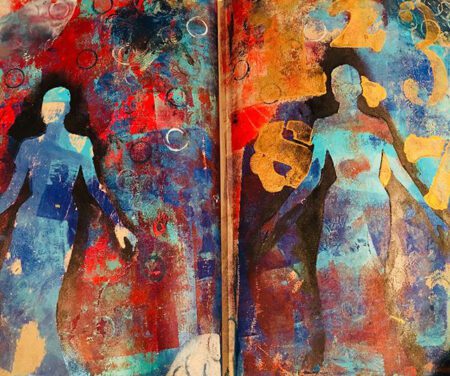Join us for our free Increasing Wellbeing and Positivity Workshop March 19, 2022
We just saw a video from Denmark that really touched a nerve–in a good way. It helped ease a pain that we, like so many people, feel about how divided we all seem to be in this country — particularly acute for many of us because it isn’t just in the US, or in the world, but in our workplace, our friendships, and even in our immediate families and our homes.
What made this video so moving? It was that they engaged a technique that quickly broke down the distinctions that appear to differentiate and divide people (race, age, gender, class, etc.) and opened up the commonalities that helped them relate to and feel connected to people that initially seemed completely different from them.
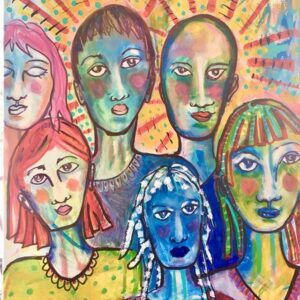
What is it that creates this “othering” tendency toward people who are different from us?! We would say identity. Or, to be more precise, attachment to one particular aspect of our identity that becomes rigid when we feel that that aspect is being threatened. This is usually unconscious–we don’t even realize it’s happening.
Is this tendency better or worse at this time in the world? We’ve heard it both ways. Some people say that it’s been exacerbated by the pandemic and the political upheaval of the last 5 years (not just in the US–everywhere), but we would provocatively suggest that humans have always been prone to “othering”, to differentiating an “Us” versus a “Them”. Technically this is called dehumanization.
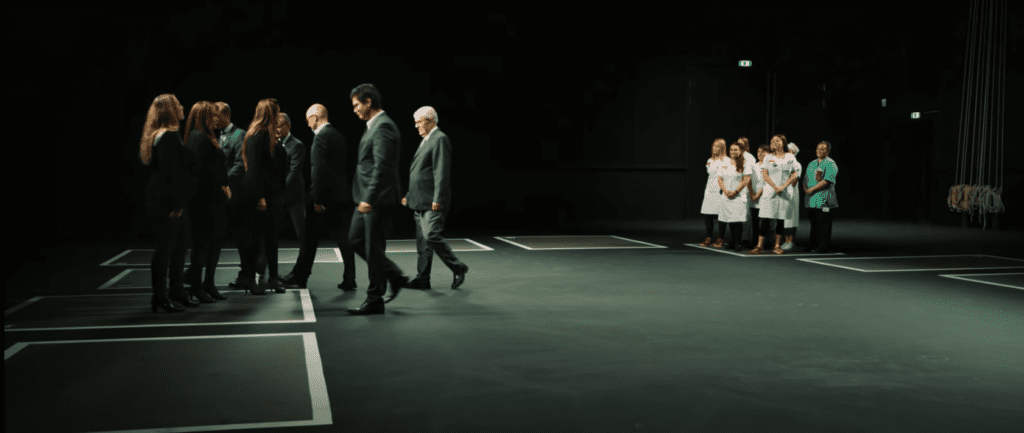
So how to you soften this polarized dehumanizing response? One method is the one employed by the Danes in their video. They gathered about 100 people and had them initially stand in “boxes” (made by lines painted on a stage) based on what they identify with most—e.g., their income and profession, whether they’re new to the country or long-time residents, urban or rural, religious or atheist, etc.
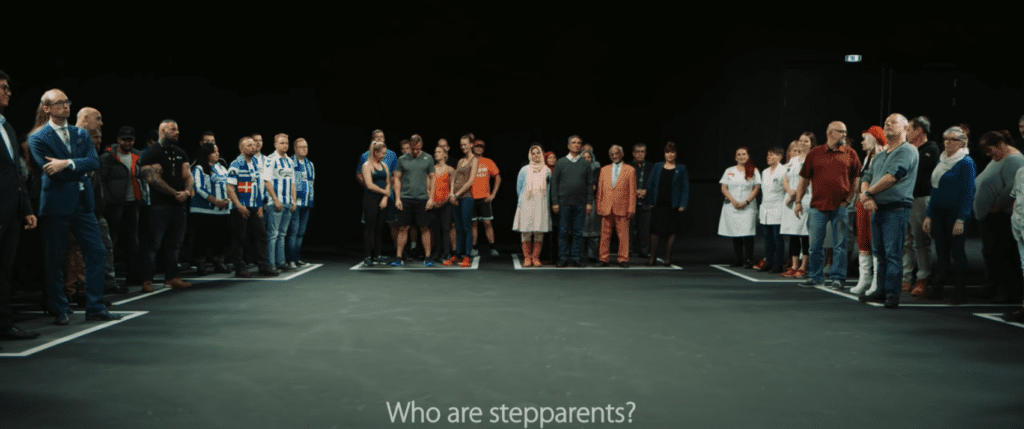
After they’re all facing one another in their self-identified boxes, the moderator listed a series of qualities, one at a time, and asked people who related to that characteristic to stand together in another box. The qualities started out as somewhat banal but then got more revealing: love to dance, stepparent, believe in life after death, seen UFO’s, broken hearted, been bullied, bullied others, bisexual, etc.
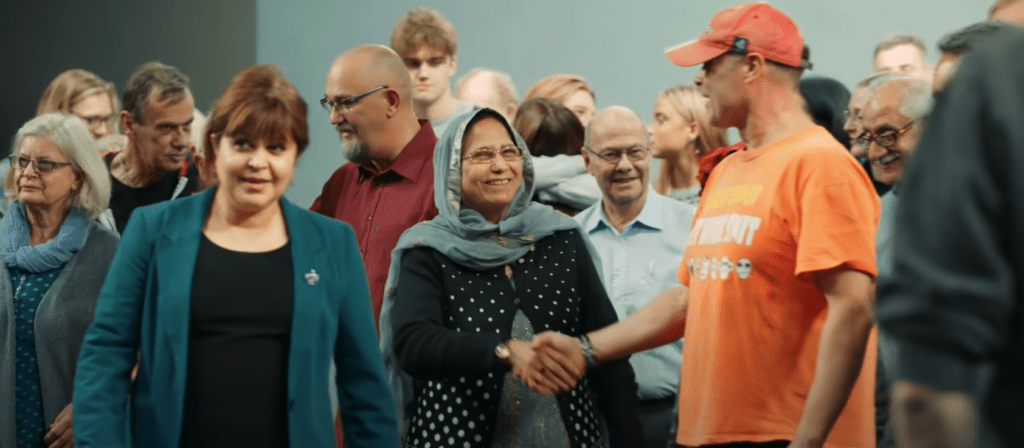
Of course, not surprisingly, by the end everyone was not only interacting with each other freely and spontaneously, they were relaxed, smiling, laughing and, most importantly, connecting with each other!The strangers moved from being “Them” to being “Us”.
Mind you, this will not end the wars breaking out in the world, it won’t cure the pandemic, or resolve the political divides on Capitol Hill and in our homes. On the other hand, it can help counter our chronic tendency to become overly attached to certain aspects of our identity and to presume that other people who do not share that identity not only have nothing in common with us but mean us harm. In other words, the way to overcome dehumanization and to “humanize” others is by finding what we have in common with them so that we identify with and relate to them.
Click here to see this inspiring video.
In the spirit of connection, Rebecca and Gioia
Art Activity
Think of a group of people who are so different from you in their politics, values, level of education, financial status, etc.. that you dismiss them or disrespect them. Find some magazine images of people that seem to be of that group and make a collage of them. As you do so, look for characteristics in the individuals that you identify with (animals, family relationships, clothing, environment, etc). See what effect this has on your perception of those people.
Don’t forget to join us for March 2022’s free Increasing Wellbeing and Positivity Workshop
March 19, 2022 at 9 am PT, 10 am MT, 11 am CT and 12 pm PT.
Click here for more information.
